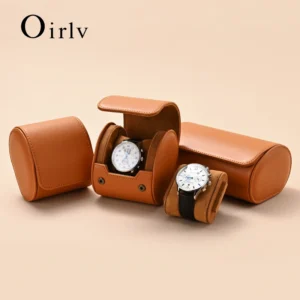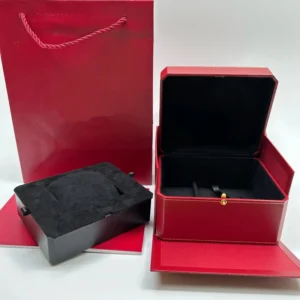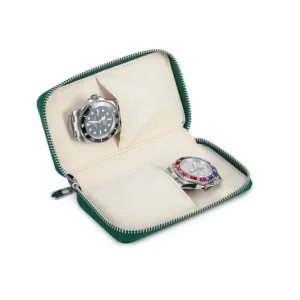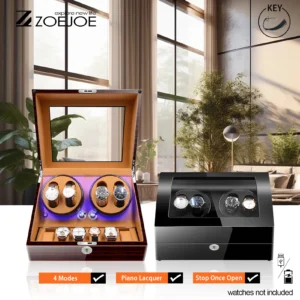Choosing the right storage solution for your timepieces is crucial for maintaining their condition and extending their lifespan. When it comes to premium watch storage options, wood and leather stand out as the two most popular materials, each offering distinct advantages for collectors. The decision between wood and leather watch storage options involves considering various factors like protection, aesthetics, durability, and functionality.
Improper storage can lead to scratched crystals, damaged bracelets, and even impact the delicate mechanisms inside your watches. Whether you have a modest collection of everyday timepieces or an assortment of luxury watches, understanding the differences between wood and leather storage will help you make an informed choice that best suits your specific needs.
In this comprehensive guide, we’ll explore the unique characteristics of both materials, examining their strengths and limitations to help you determine which option will best protect and showcase your valuable timepieces.
Quick Comparison: Wood vs. Leather at a Glance
Before diving into the details, here’s a quick side-by-side comparison of wood and leather watch storage solutions to highlight their key differences:
| Feature | Wood Storage | Leather Storage |
|---|---|---|
| Durability | High (10+ years with proper care) | Moderate to High (5-10+ years depending on leather quality) |
| Protection Level | Excellent for impact protection | Good for scratch protection |
| Aesthetic | Classic, substantial, display-focused | Luxurious, tactile, often more portable |
| Maintenance Required | Moderate (dusting, occasional polishing) | Moderate to High (conditioning, cleaning) |
| Portability | Limited (typically heavier and rigid) | Excellent (especially watch rolls and pouches) |
| Price Range | $75-$500+ | $50-$400+ |
| Humidity Control | Better natural regulation (especially cedar) | Limited natural regulation |
| Best For | Home display, multiple watches, automatic watches | Travel, smaller collections, easy access |
When considering different watch storage comparison options, keep in mind that your specific needs and preferences will ultimately determine which material serves you best.
Material Characteristics: Understanding the Foundations
To make an informed decision, it’s important to understand the fundamental properties of both wood and leather as storage materials.
Wood storage options are characterized by their rigidity, sturdiness, and natural beauty. Different wood types offer varying levels of density, with hardwoods like mahogany and walnut providing excellent durability and resistance to warping. Wood possesses natural thermal insulation properties that help buffer temperature changes, which can be beneficial for mechanical watches. The natural grain patterns of wood also make each piece unique.
Leather storage, on the other hand, is defined by its flexibility, softness, and luxurious feel. Full-grain leather (made from the top layer of the hide) offers superior durability and develops a beautiful patina over time. Top-grain leather is slightly more processed but still maintains good quality, while genuine leather is more affordable but less durable. Leather’s flexibility allows for various storage formats, from rigid boxes to rollable pouches.
Both materials can be crafted to provide excellent protection, though they achieve this in different ways. The benefits of wooden watch storage include structural integrity and sometimes built-in humidity regulation, while leather excels in scratch prevention and adaptability.
Wood Watch Storage: Strengths and Features
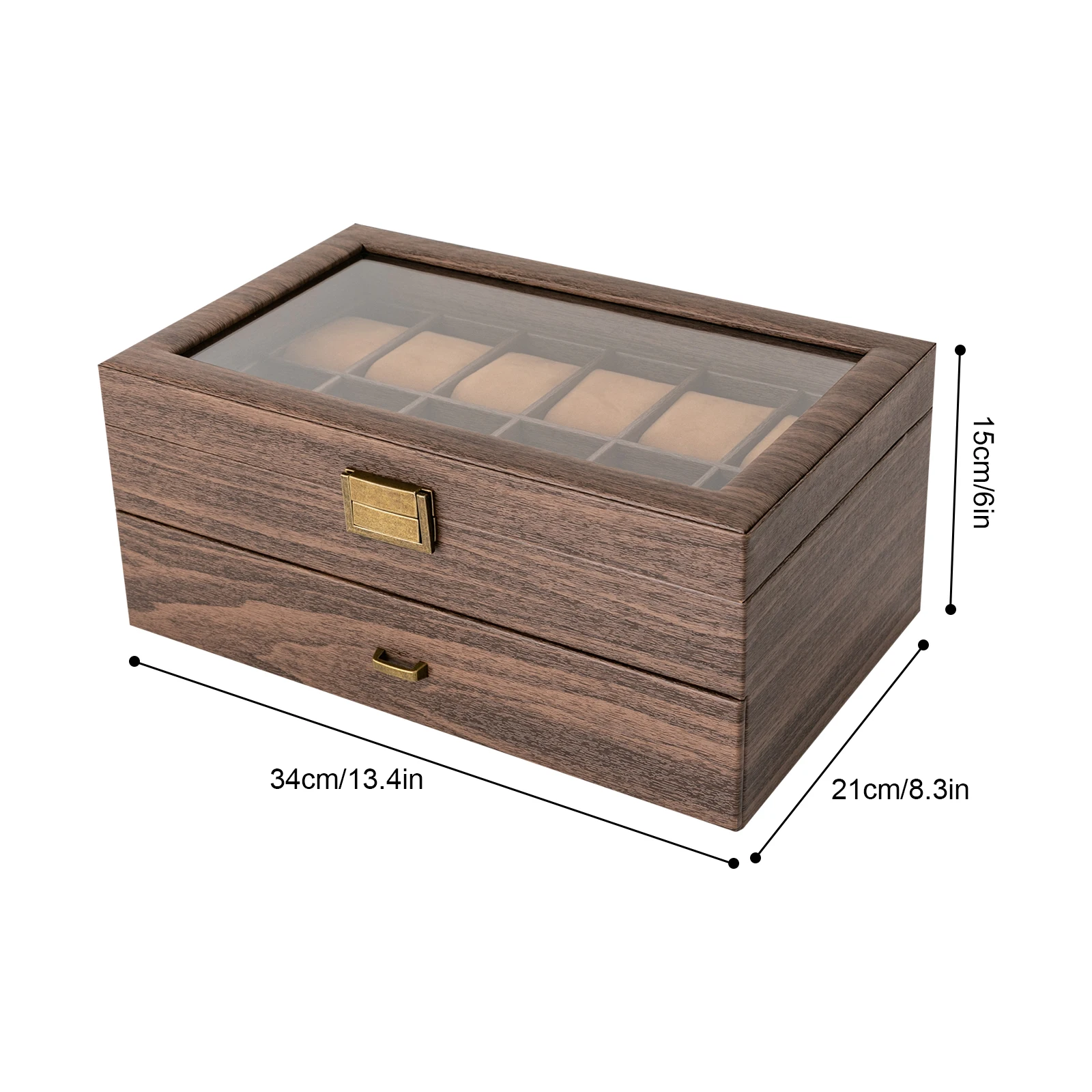
Wooden watch boxes offer several distinct advantages that have made them a favorite among serious collectors:
Superior Structural Protection: The rigid nature of wood provides excellent protection against impact damage. This solid construction creates a stable environment that helps shield watches from accidental bumps and drops.
Aesthetic Appeal: Few materials match the classic elegance of a finely crafted wooden watch box. The natural grain patterns, rich colors, and smooth finishes create a display-worthy container that enhances the presentation of your collection.
Humidity Regulation: Certain woods, particularly cedar, offer natural humidity regulation properties that can help protect watches from moisture damage, especially important for mechanical timepieces with metal components susceptible to corrosion.
Customization Options: Wood allows for various customization features like glass viewing tops, individual watch cushions, dedicated accessory compartments, and even personalized engravings or inlays.
For collectors with multiple timepieces, our wooden watch boxes provide organized storage while doubling as attractive display pieces that complement home décor.
Types of Wood Used in Premium Watch Storage
Not all wooden watch boxes are created equal. The specific type of wood used significantly impacts the box’s appearance, durability, and protective qualities:
Mahogany: Known for its reddish-brown hue and fine grain, mahogany offers excellent durability (scoring around 800 on the Janka hardness scale) and resistance to warping. It develops a rich patina over time and represents a classic choice for heirloom-quality storage.
Walnut: With its chocolate brown tones and striking grain patterns, walnut provides good durability (around 1,010 on the Janka scale) and natural beauty. It’s slightly heavier than some woods but offers excellent stability.
Cherry: This wood features a distinctive reddish tone that deepens with age. While slightly softer (around 950 on the Janka scale), cherry provides good durability with a smooth finish that highlights its fine grain patterns.
Oak: Extremely durable (around 1,290 on the Janka scale) with prominent grain patterns, oak offers excellent resistance to wear and damage. It’s available in red and white varieties, with white oak offering superior moisture resistance.
Maple: With its light color and subtle grain, maple provides exceptional hardness (around 1,450 on the Janka scale) and resistance to abrasion, making it ideal for long-term durability.
When selecting best wood watch boxes, consider both aesthetic preferences and the protection qualities of different wood types to find the perfect match for your collection.
Leather Watch Storage: Strengths and Features
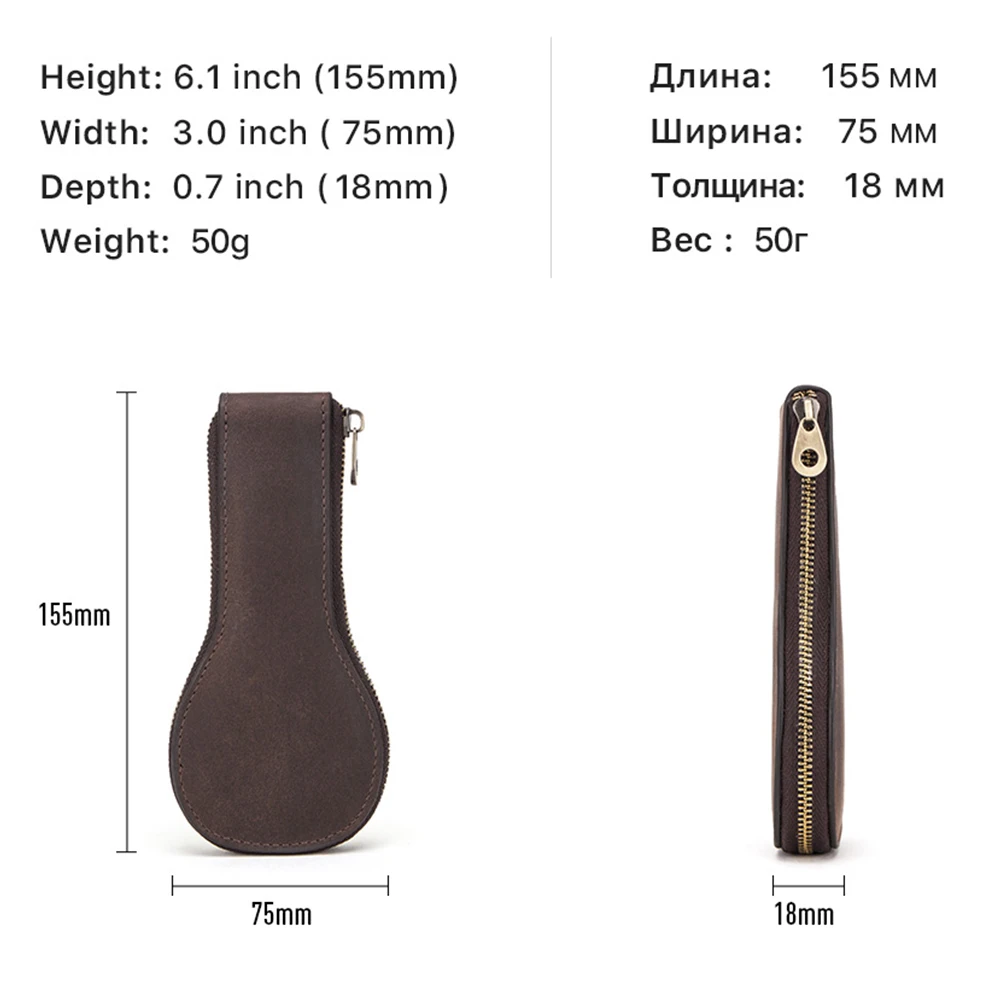
Leather watch storage offers a different set of advantages that many collectors find compelling:
Superior Portability: The flexible nature of leather allows for travel-friendly designs like watch rolls, pouches, and zippered cases that can be easily packed for travel while still providing good protection.
Luxurious Tactile Experience: Few materials match the sensory appeal of fine leather. The soft touch, natural warmth, and distinctive leather scent create a premium unboxing experience each time you access your watches.
Scratch Protection: High-quality leather, often paired with soft suede or microfiber linings, offers excellent protection against scratches on watch cases, bracelets, and crystals.
Versatile Formats: Leather can be crafted into various storage solutions, from traditional box formats to innovative watch rolls, travel pouches, and folio-style cases that accommodate different collection sizes and usage scenarios.
Our collection of leather watch boxes includes options ranging from compact travel cases to elegant multi-watch storage solutions with dedicated compartments for accessories.
Understanding Leather Grades for Watch Storage
The quality of a leather watch case depends significantly on the grade of leather used:
Full-Grain Leather: The highest quality leather available, made from the top layer of the hide with all natural grain intact. It’s extremely durable, develops a beautiful patina over time, and offers the best longevity. Full-grain leather cases typically range from $100-$400 depending on size and features.
Top-Grain Leather: The second-highest quality, with the outermost layer sanded to remove imperfections. While slightly less durable than full-grain, it maintains good quality with a more uniform appearance and is typically priced between $75-$300.
Genuine Leather: A lower grade made from the layers remaining after top grades are removed. Less durable and often treated to mimic higher grades, genuine leather cases are more affordable ($50-$150) but won’t last as long as premium options.
Bonded Leather: Made from leather scraps bonded together with adhesives, this is the lowest quality option. While inexpensive ($30-$100), bonded leather cases may crack or peel over time and offer limited protection.
For those seeking premium protection, the features of high-quality leather watch boxes include full-grain or top-grain leather exteriors with soft, non-abrasive linings that cradle your timepieces securely.
Limitations of Wood Watch Storage
Despite their many advantages, wooden watch boxes do have some limitations to consider:
Weight and portability present the most obvious drawback. Wooden boxes, especially those housing multiple watches or incorporating watch winders, can be quite heavy and bulky. This makes them less practical for travel or situations where you need to move your collection frequently.
Environmental sensitivity can also be a concern. Despite wood’s natural humidity-regulating properties, extreme conditions can still cause issues. Very dry environments may cause wood to crack, while excessive humidity can lead to warping or even mold in severe cases.
Maintenance requirements are another consideration. Wood benefits from occasional polishing and careful cleaning to maintain its appearance. Certain finishes may also require reapplication over time to protect the wood and preserve its beauty.
Space considerations shouldn’t be overlooked. Wooden watch boxes typically have a fixed, rigid structure that requires dedicated space. For those with limited room, the inability to compress or adjust a wooden box’s footprint could be problematic.
Understanding the maintenance requirements for both wood and leather cases will help you properly care for your chosen storage solution.
Limitations of Leather Watch Storage
Leather watch storage also comes with its own set of potential drawbacks:
Limited impact protection ranks among the most significant concerns. While leather excels at preventing scratches, it typically offers less rigid protection against impacts compared to wood. This could be problematic if you’re worried about drops or significant bumps.
Aging and maintenance considerations are important with leather. Without proper conditioning, leather can dry out and crack over time, especially when exposed to sunlight or dry conditions. Regular application of appropriate leather conditioners is necessary to maintain flexibility and appearance.
For some consumers, ethical considerations regarding traditional leather production may be a concern. Though many manufacturers now offer responsibly sourced leather options, those with strong ethical positions may prefer alternative materials.
Vulnerability to staining is another potential issue. Leather, particularly lighter colors, can be susceptible to stains from water, oils, or other substances. Once stained, leather can be difficult to restore to its original condition without professional treatment.
Protection Factors: Keeping Your Timepieces Safe
When it comes to protecting your valuable timepieces, both wood and leather offer different advantages:
For scratch protection, leather often has the edge. The soft, pliable nature of leather, especially when paired with velvet or suede interiors, provides excellent protection against surface scratches on watch cases, bracelets, and crystals. Wood boxes typically incorporate protective inserts or linings to achieve similar results.
When considering impact protection, wooden cases clearly excel. The rigid structure of wood absorbs and distributes impact forces, helping to shield watches from damage due to drops or bumps. Leather offers limited impact resistance unless it features additional padding or reinforced structures.
Dust protection varies between styles rather than materials. Both wood and leather cases with proper closures (magnetic, snap, or zipper) provide good protection against dust. However, display-style cases with glass tops might allow some dust to enter over time, regardless of whether they’re made of wood or leather.
Interior lining quality is crucial regardless of exterior material. High-quality watch storage of either material should feature non-abrasive linings like microfiber, velvet, or suede that won’t scratch delicate watch surfaces. These linings are often more important for direct watch protection than the exterior material itself.
Browse our collection of premium watch boxes to find the perfect balance of protection and presentation for your timepieces.
Aesthetic Considerations: Finding Your Style
The aesthetic appeal of your watch storage should complement both your watches and your personal style:
Wood offers a timeless, substantial presence that often works well with traditional or classic décor. Darker woods like mahogany or walnut tend to convey a sense of heritage and permanence, while lighter woods like maple or ash create a more contemporary feel. Wood storage typically makes a statement as a display piece.
Leather projects a sense of luxury and sophistication. From rich, dark browns to vibrant colors, leather watch storage can either blend subtly into your décor or serve as an accent piece. The material’s natural variations and ability to develop a patina mean it often becomes more visually interesting over time.
Consider how the storage will age visually. Quality wood develops deeper, richer tones over the years, especially when exposed to natural light. Premium leather develops a patina that many collectors find appealing, with the material softening and developing character with use.
The style of your watch collection should influence your storage choice. Vintage or classic watches often pair beautifully with wooden cases that echo traditional craftsmanship. Modern or sporty timepieces might be complemented by sleek leather storage with contemporary design elements.
Travel and Portability Comparison
For collectors who travel with their watches, portability becomes a crucial consideration:
Leather has a clear advantage for travel purposes. Leather watch rolls typically weigh 8-16 ounces (226-453g) and can be easily rolled or folded to fit in luggage. Their flexibility allows them to be packed in various spaces, making them ideal travel companions.
Wooden cases, while offering superior protection, typically weigh 2-5 pounds (0.9-2.3kg) or more depending on capacity and features. Their rigid structure cannot be compressed, requiring dedicated packing space when traveling.
For transit protection considerations, leather cases with padded interiors and secure closures provide good protection against the minor bumps of travel while remaining lightweight. Wooden cases offer superior protection against major impacts but at the cost of increased weight and bulk.
Many serious collectors opt for a hybrid approach – keeping a primary wooden storage case at home for display and protection, while using a dedicated leather travel case or roll when on the move. Our selection of watch travel cases includes options designed specifically for safe and convenient transport.
Maintenance and Longevity Guide
Proper care significantly extends the life of either storage material:
Wood Maintenance:
– Dust regularly with a soft, lint-free cloth
– Avoid direct sunlight which can fade and dry wood over time
– Apply appropriate wood polish 2-3 times per year
– Maintain moderate humidity (40-60%) to prevent cracking or warping
– Clean spills immediately to prevent staining
Leather Maintenance:
– Apply leather conditioner every 3-6 months to prevent drying
– Keep away from direct heat and sunlight which can cause drying and cracking
– Clean with appropriate leather cleaner when needed
– Allow to air dry naturally if it becomes wet
– Store in a dust bag when not in use for extended periods
With proper care, quality wooden watch boxes typically last 10-20+ years, while premium leather cases can last 5-15+ years depending on the leather quality and usage conditions. Understanding how to clean leather watch cases properly will help maintain their appearance and protective qualities.
Watch Type Compatibility: What Works Best
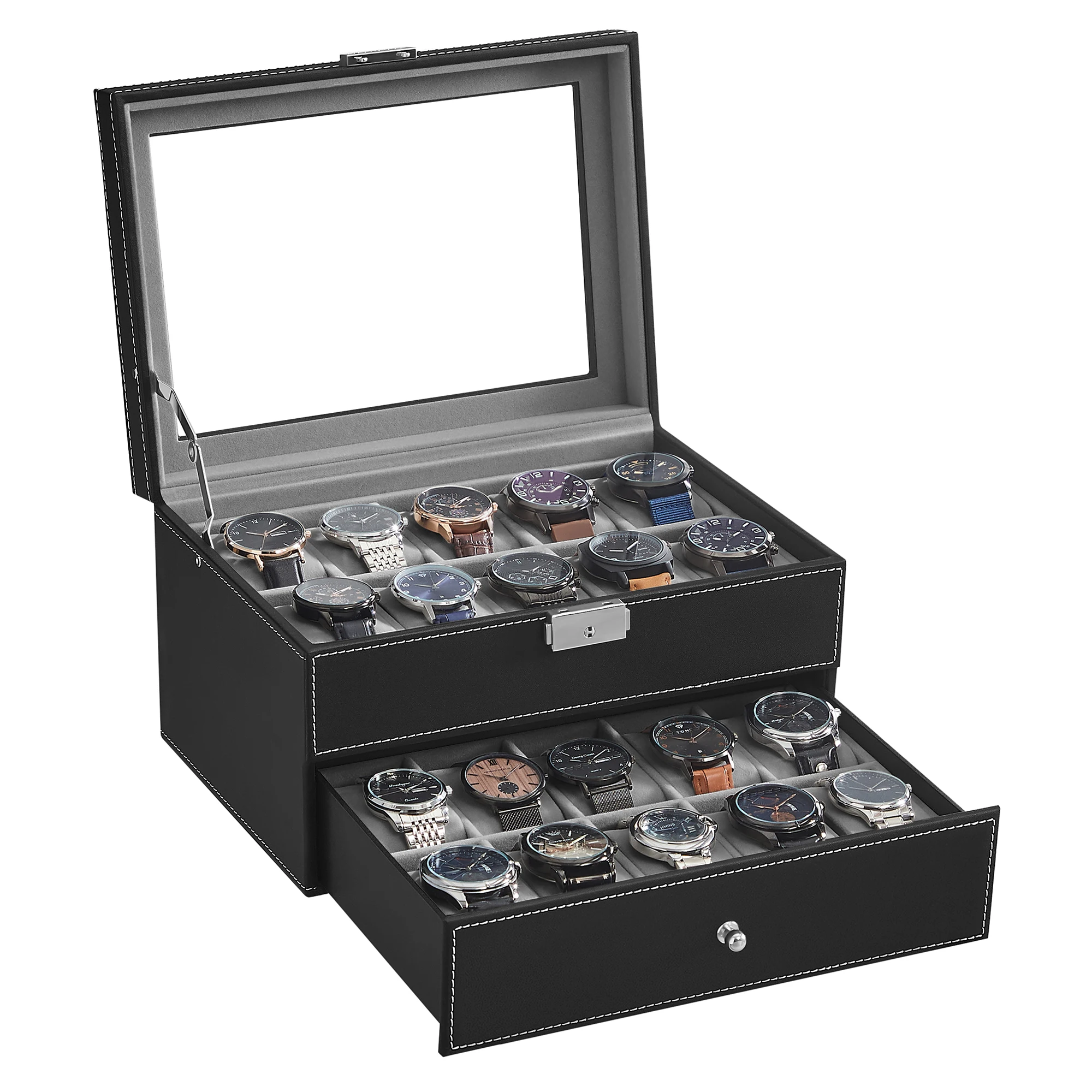
Different watch types benefit from specific storage considerations:
For mechanical watches, wooden cases with dedicated winder integration often provide ideal storage. The solid construction helps protect delicate movements, while options with integrated winders keep automatic watches running. Leather cases can work well for short-term storage but may lack winding capabilities.
Vintage watches generally benefit from wooden storage with controlled humidity. Older timepieces often have more susceptible materials and can be sensitive to environmental changes. Cedar-lined wooden boxes offer some natural humidity regulation that helps preserve vintage pieces.
Dive watches and sports models with higher water resistance tend to be more durable and may do well in either material. However, the additional impact protection of wood can be beneficial for these often larger, heavier watches.
Watches with leather straps require special consideration. Storage should avoid putting pressure on straps, as this can cause creasing or deformation over time. Both wood and leather storage can be suitable, provided they’re designed with appropriate cushioning that doesn’t compress the strap.
When selecting between wood and leather watch cases, consider your specific collection to determine which material will provide the best environment for your particular timepieces.
Luxury Watch Boxes, Men's Watch Boxes, Single Watch Box
Price range: $903.35 through $980.97 Select options This product has multiple variants. The options may be chosen on the product pageSingle Watch Travel Case, Watch and Jewelry Box, Watch Roll Travel Case
Price range: $93.44 through $140.65 Select options This product has multiple variants. The options may be chosen on the product pageAutomatic Watch Winder, Luxury Watch Winder, Single Watch Box
$307.39 Select options This product has multiple variants. The options may be chosen on the product pageLuxury Watch Boxes, Luxury Watch Travel Case
Price range: $200.33 through $224.57 Select options This product has multiple variants. The options may be chosen on the product pageLeather Watch Travel Case, Men's Watch Travel Case, Watch Roll Travel Case
Price range: $91.37 through $92.63 Select options This product has multiple variants. The options may be chosen on the product page4 Watch Winder, 6 Watch Box, Automatic Watch Winder
$512.31 Select options This product has multiple variants. The options may be chosen on the product page
Environmental and Ethical Considerations
For environmentally conscious collectors, material sourcing is increasingly important:
Sustainable wood options are becoming more widely available. Look for watch boxes made from FSC-certified wood, which ensures the material comes from responsibly managed forests. Reclaimed or repurposed wood is another eco-friendly option that reduces demand for new timber.
For leather, ethical considerations include both animal welfare and environmental impact of tanning processes. Vegetable-tanned leather uses natural materials rather than harsh chemicals, creating a more environmentally friendly product. Some manufacturers now offer leather sourced from facilities with animal welfare certifications.
Alternative materials are also entering the market. High-quality vegan leather options made from plant-based materials provide similar aesthetics and functionality to traditional leather without animal products. For wood alternatives, bamboo offers a rapidly renewable resource with many similar properties to hardwoods.
Production processes vary widely in their environmental impact. Small-batch, handcrafted storage often has a lower carbon footprint than mass-produced options, though this varies by manufacturer.
Making Your Decision: Important Factors to Consider
When making your final selection between wood and leather watch storage, consider these key factors:
Collection Size and Growth: Wooden cases typically accommodate more watches in a single unit, making them ideal for larger collections. If you anticipate your collection growing, a wooden case with 6-12 slots might be preferable to multiple smaller leather cases.
Primary Purpose: Determine whether display, protection, or portability is your main priority. If you enjoy seeing your collection on display, a wooden case with a glass top might be ideal. If you travel frequently with watches, leather storage would be more practical.
Home Environment: Consider your local climate and storage location. Extremely dry or humid environments might make wooden storage more challenging to maintain without climate control. Leather can also be affected by extreme conditions but sometimes offers more flexibility.
Budget Considerations: Quality wooden cases typically start around $75-100 for basic models and can reach $500+ for premium options with multiple features. Leather cases generally range from $50-400 depending on leather quality and design complexity.
Many enthusiasts find that comparing different watch storage types helps identify the optimal solution for their specific collection and lifestyle needs.
Hybrid Solutions: Getting the Best of Both Worlds
For those who can’t decide between wood and leather, hybrid options combine the benefits of both materials:
Leather-lined wooden cases feature rigid wooden exteriors for excellent protection and display quality, with soft leather interiors that provide gentle contact with watches. These combine the structural benefits of wood with the scratch protection of leather.
Wooden-framed leather rolls or cases incorporate wooden elements for structure and presentation while using leather for flexibility and style. These are less common but offer an interesting middle ground between the two materials.
Many collectors develop a storage system using both materials for different purposes. A wooden display case might serve as the home base for a collection, while a leather travel roll or pouch provides portable protection for watches on the go.
Custom solutions are also available from many manufacturers, allowing you to specify exactly which elements you want from each material. When deciding between a watch box vs. watch roll, consider how each format might complement your existing storage system.
Is Wood or Leather Better for Automatic Watches?
Automatic watches have specific storage needs due to their self-winding mechanisms:
For long-term storage of automatic watches, wooden cases with integrated winders typically provide the ideal solution. The solid construction protects the movement while the winder keeps it running at optimal performance. Wooden cases also tend to offer better dust protection for extended storage periods.
Leather storage can be suitable for short-term use with automatic watches, especially when traveling. However, leather cases rarely incorporate winding functionality, meaning your automatic watches may stop running after a day or two.
Movement health considerations favor wooden storage with winders for collections that aren’t worn regularly. Keeping automatic movements running prevents lubricants from settling and ensures better long-term performance. Without winders, watches should ideally be manually wound periodically.
For collectors with multiple automatic watches, our luxury watch boxes often include integrated winding capabilities while providing excellent protection and display options.
Can Humidity Affect Watches in Wood or Leather Storage?
Humidity can significantly impact watch condition regardless of storage material:
Both extreme high and low humidity can damage watches. High humidity (above 60%) may cause corrosion of metal components or mold on leather straps, while very low humidity (below 35%) can cause leather straps to dry and crack and may affect certain movement lubricants.
Wood offers some natural humidity regulation, particularly cedar, which can absorb excess moisture and release it when the environment becomes too dry. This makes wooden storage advantageous in environments with minor humidity fluctuations.
Leather provides minimal humidity regulation on its own. While it can absorb some moisture, leather is more susceptible to environmental conditions and may be damaged by excessive humidity itself.
For optimal protection in problematic environments, consider storage with added humidity control features. Some premium wooden cases include hygrometers or humidification systems that help maintain ideal conditions. Understanding the durability factors of wood and leather watch cases will help you choose the best option for your specific environment.
What About Watch Winder Integration?
For automatic watch collectors, integrated winding capability is an important consideration:
Wood cases more commonly incorporate watch winders, with the rigid structure providing ideal support for the winding mechanism. The solid construction also helps dampen the sound of the winders, resulting in quieter operation.
Leather cases rarely feature built-in winders due to their typically more flexible construction. When they do, the winders are usually incorporated into more structured sections with reinforced frameworks.
Aesthetic integration of winders tends to be more seamless in wooden cases, where the mechanical elements can be incorporated into the overall design. In leather cases with winders, the technology sometimes appears as an add-on rather than an integrated feature.
Power supply accessibility is another consideration. Wooden cases typically feature discreet cord management systems for winders, while leather cases may have more exposed power connections. Our selection of premium watch winders includes both standalone options and those integrated into storage cases.
Frequently Asked Questions
Which material provides better value for the money?
Both materials can provide excellent value depending on your needs. Wood typically offers better longevity and display quality for the price, while leather excels in portability and tactile luxury. For pure longevity per dollar spent, high-quality wooden cases often edge out leather options.
Can I store watches with leather straps in leather cases?
Yes, leather watch straps store well in leather cases, especially those lined with non-abrasive materials like microfiber or suede. The key is ensuring the watch cushions don’t compress the strap into tight bends, which can cause creasing over time.
Are there alternative materials worth considering besides wood and leather?
Yes, several alternatives exist. Carbon fiber cases offer lightweight durability with a modern aesthetic. Aluminum provides excellent protection with minimal weight. Various synthetic materials also offer good protection with unique design possibilities, often at lower price points than premium wood or leather.
How do I prevent watches from scratching each other in storage?
Regardless of whether you choose wood or leather, ensure your storage includes individual compartments or dividers that prevent watches from contacting each other. Quality lining materials and properly sized watch cushions are more important for preventing scratches than the exterior material.
By carefully considering your specific needs, preferences, and collection characteristics, you’ll be well-equipped to choose between wood and leather watch storage options. Both materials offer excellent benefits when properly crafted, and many enthusiasts ultimately incorporate both into their watch storage solutions.



